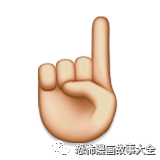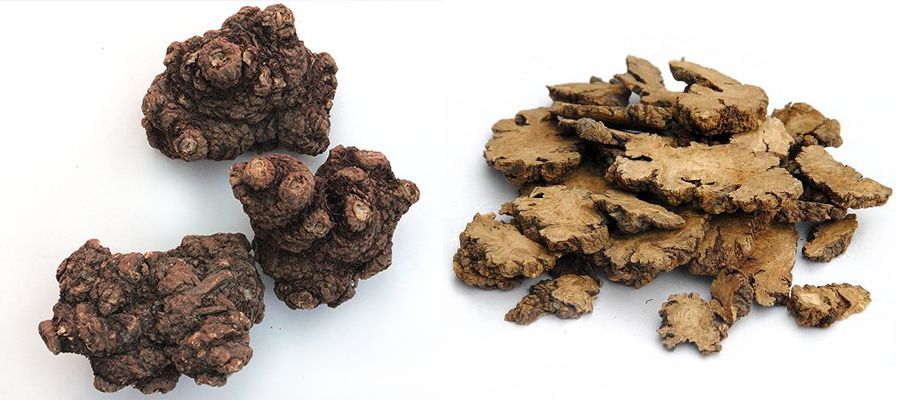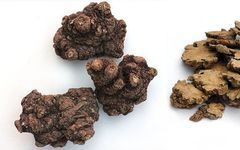 Click on 【Herb Query】, then click the upper right corner 【···】
Click on 【Herb Query】, then click the upper right corner 【···】
Set as Star/Pin
Star/Pin for easy access
for easy access
Chuanxiong
(川芎)

【Medicinal Source】The rhizome of the plant Ligusticum chuanxiong from the Umbelliferae family.
【Properties】Warm in nature, pungent in flavor.
【Meridians Entered】Liver meridian, Gallbladder meridian, Pericardium meridian.
【Functions】Invigorates blood circulation, promotes qi flow, dispels wind, and alleviates pain.
Chuanxiong, originally named Xiongji, also known as Xiangguo, is a plant from the Umbelliferae family. Historically, the best quality comes from Sichuan Province, hence the name Chuanxiong. The “Yidu Fang Wulue Ji” states: “Xiongji is found everywhere in Shu, and at the medicinal market in Chengdu on the ninth day of the ninth month, Xiongji and Dahuang are piled high, with fragrance wafting for miles.” Among them, Guan County is particularly recommended, while Chengdu and Chongqing are merely important distribution centers. Xiongji is named according to its place of origin, such as Xixiong from Shaanxi Province, Lanxiong from Lantian County in Shaanxi, Nanxiong from Wenzhou and Jinhua in Zhejiang, Jingxiong from Guanzhong, Taixiong from Tiantai, and Fuxiong from Jiangnan. However, generally speaking, except for those produced in Sichuan, the others are not authentic. In modern times, Japan also produces it, but the taste is poor and unsuitable for medicinal use.
Chuanxiong has been used in medicine for a long time, being listed as a medium-grade herb in the “Shennong Bencao Jing”. However, Li Shizhen in the “Bencao Gangmu” states that it is an “upper-grade herb”, which may be a typographical error, as upper-grade herbs “nourish life in response to heaven, can be taken for a long time without harming the person, and benefit qi without aging or prolonging life”. In contrast, Chuanxiong “if taken for a long time, disperses true qi” (from “Pinhui Jingyao”), and there is even a warning that “taking it alone for a long time can lead to sudden death” (from “Bencao Qiuzhen”), thus it should never be used as an upper-grade tonic. Regarding the claim of “sudden death”, there are two cases mentioned by Shen Kuo in the Song Dynasty’s “Mengxi Bitan”:
“A clan member used to take Xiongji for a long time, and the doctor Zheng Shuxiong saw him and said, ‘Xiongji should not be taken for a long time, as it often leads to sudden death.’ Later, the clan member died without illness.”
Again: “Zhang Zitong’s wife suffered from wind stroke and took Xiongji for a long time, and one day she suddenly died, all witnesses saw this. This is because taking it alone for too long disperses true qi; if other herbs are used to assist, and it is not taken for long, the illness would not have reached this point.”
Let the past serve as a lesson for the future, and I hope those who take it regularly will heed this warning.
Chuanxiong has a wide range of indications, but there are two unique aspects. The first is its treatment of headaches, and the second is its regulation of menstruation. As Ming Dynasty physician Li Gao stated: “Chuanxiong ascends to the head, assisting the yang qi and alleviating pain; it descends to the blood sea, nourishing new blood and regulating menstruation.” Statistics show that throughout history, there are about 150 prescriptions named after Chuanxiong or using it to treat headaches. The ancients had a saying: “For headaches, Chuanxiong must be used,” but there is still debate today. What is more consistent is that for externally contracted headaches, Chuanxiong is an essential herb, and its effects are confirmed and withstand repeated verification. As stated in “Bencao Zheng”: “Only for headaches caused by wind and cold is it extremely suitable to use.” The “Bencao Yanyi” also mentioned: “Xiongji is the most used by modern people, and it cannot be absent for headaches and facial wind.”
However, there is disagreement on whether Chuanxiong can be used for blood deficiency headaches and liver fire headaches. Those who believe it can be used, such as Zhang Yuansu, praise Chuanxiong as “the holy medicine for blood deficiency headaches”; “Yixue Qiyuan” states that Chuanxiong “supplements blood and treats blood deficiency headaches”; and “Li Gao’s Ten Books” states: “For blood deficiency headaches, Danggui and Chuanxiong are the main herbs.” However, modern famous physician Zhang Shanlei argues: “Blood deficiency headaches are also due to yin deficiency below and yang excess above; how can this be treated the same as wind and cold externally contracted headaches, where clear yang does not ascend?”
Modern physicians believe that when the blood is deficient, it cannot nourish the brain and the vessels become empty, leading to blood deficiency headaches. Therefore, the main treatment should be to nourish blood and support the essence, and pungent herbs that move blood should be avoided. However, if a small amount of Chuanxiong is added to a large dose of blood-nourishing herbs, it can nourish blood and harmonize the essence, supplementing without stagnation, and can also invigorate the blood to ascend to the top, nourishing the brain vessels. But Chuanxiong is ultimately a pungent and warm herb; if used improperly, it may deplete the essence and cause dispersion. The late famous physician Zheng Gongshuo from Songjiang, Shanghai, had a family recipe for treating blood deficiency headaches that can be referenced: Chuanxiong paired with Danggui, Baishao, Shudihuang, Huangqi, Gouqi, Nvzhen, Gancao, Xixin, and Chenpi.
Furthermore, there is also debate on whether Chuanxiong can be used for liver fire headaches. For example, Song Dynasty physician Qian Yi’s Xieqing Pill combines Chuanxiong with Longdancao, Dahuang, and Shanzhizi to treat liver fire excess, headaches, red eyes, irritability, and pediatric convulsions. Professor Ding Guangdi from Nanjing University of Traditional Chinese Medicine also believes that “this kind of medication that ascends and descends is most suitable for treating headaches caused by wind and fire” (from “Compatibility of Chinese Medicine”). However, Zhang Shanlei argues: “For treating liver wind, one should contain and seek to calm it; how can one further use ascending herbs to assist its rise? If Chuanxiong’s pungent ascent stirs the liver yang, will it not exceed and fly high, causing the wind to rise? This is a misunderstanding of using dispersing external wind herbs as a means to clear internal wind, which is harmful… and to say that Chuanxiong can ascend the clear yang qi to treat liver and gallbladder qi excess is like adding fuel to the fire, which will only exacerbate the situation.”
In this debate, the key is to be adept at pattern differentiation and prescription selection, skillfully combining herbs, knowing which is the monarch and which is the minister, which is light and which is heavy. If one masters the appropriate dosage, one can turn disadvantages into advantages. As the famous physician Zhang Shanlei said: “Chuanxiong, with its thin flavor and strong qi, is like a brave warrior charging into battle, unstoppable; it must rely on a good commander, carefully selecting good materials to advance together, in order to capture the enemy and strike directly at the heart of the matter.”
A famous old TCM physician from Jingdezhen, Zhang Liaoran, has his own secret method for using Chuanxiong to stop headaches. He believes that when using Chuanxiong for externally contracted headaches, the dosage must be very small, not exceeding 4 grams; if the dosage is too high, it will not only fail to relieve the headache but may also cause dizziness. When using Chuanxiong for hypertension-related liver yang headaches, he advocates a large dosage, generally using 9-12 grams, often combined with Shijue Ming and Zhenzhu Mu for calming effects. Additionally, it is now often used for blood stasis headaches (including post-concussion headaches), and large dosages are recommended, which can be as high as 30-40 grams, showing remarkable efficacy.
Chuanxiong is also a good gynecological medicine, as it has the effect of “regulating the pulse, breaking up blood stasis, and nourishing new blood.” For any blood-related diseases, such as women’s menstrual irregularities, dysmenorrhea, amenorrhea, postpartum stasis abdominal pain, and masses, it is applied. The most commonly used formula is the Siwu Decoction, which consists of Shudihuang, Baishao, Danggui, and Chuanxiong. These four herbs combined can treat all blood heat, blood deficiency, and blood dryness diseases. If for regulating menstruation, it is often paired with Chaihu; if treating dysmenorrhea, more Xiangfu is added; if there is blood stasis, Chuanxiong is paired with Chishao, and in severe cases, with Taoren and Honghua; if there is heat, it must be paired with Danpi, and in severe cases, with Shanzhizi; if there is qi stagnation, it is paired with Qingpi and Chenpi, and in severe cases, with Jiangxiang and Yanhusuo; if postpartum, it is added with Shanzha and Yimucao; if there are masses, it can be added with Sanleng and E’zhun. The above is a general overview of Chuanxiong’s use in gynecology.
Finally, please note that the “Eighteen Contradictions” of Chinese medicine states: “All pungent herbs rebel against Liulu,” but does not mention the contradiction between Chuanxiong and Liulu. However, both Liu Wentai in the Ming Dynasty’s “Pinhui Jingyao” and Zhang Jingyue in the Ming Dynasty’s “Bencao Zheng” mention that “Chuanxiong contradicts Liulu,” so this should not be overlooked in use.
The end of the article. Thank you for your patience in reading. If you find it good, please click “Like” in the lower right corner~
Selected Articles
Analysis of Sanqi (Notoginseng) – Stops Bleeding and Transforms Stasis
Analysis of Hawthorn – “Food and Medicine Share the Same Source” but Should Not Be Overconsumed
Analysis of Ephedra – Traditional Chinese Medicine’s Prominence in the West
Analysis of Fuzi – A Unique Combination of Remarkable Efficacy and Toxicity
Analysis of Ejiao – An Ancient Tribute, Now a Good Medicine
Analysis of Shan Yao – A Dual-purpose Herb for Spleen and Stomach
Analysis of Dihuang – Nourishing the Kidneys and Cooling the Blood for Three Thousand Years
Analysis of Chenpi – A Good Medicine for the Spleen and Stomach
Analysis of Dahuang – The “Cold General” of Chinese Medicine
Herb Query

Long press to recognize the QR code to follow
The Herb Query is the official public account for Chinese medicine queries, making it convenient for users to find the desired Chinese medicine information anytime and anywhere, greatly promoting the essence of Chinese medicine that has been around for over 5000 years.

